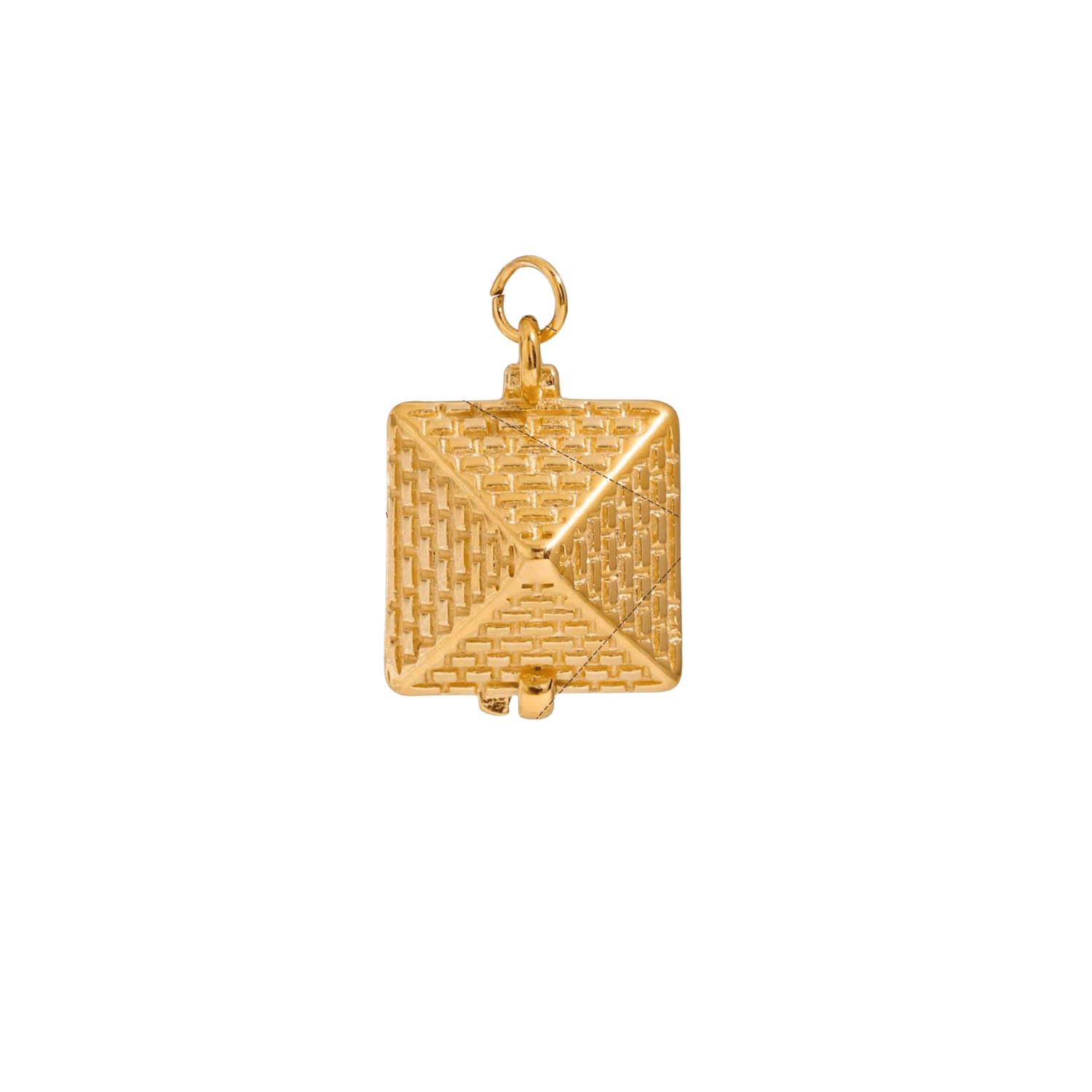
Hypoallergenic Innovations Address Common Skin Concerns
Share
Quick Listen:
In the vibrant jewelry bazaars of Mumbai, where rows of glittering gold and colorful gemstones draw crowds daily, a subtle yet significant change is taking place. Indian women have long cherished intricate bangles, necklaces, and earrings as symbols of tradition and elegance, but for many, these treasures come with hidden discomforts like skin irritation, rashes, or persistent dermatitis caused by metals in low-quality pieces. Research from dermatology studies in India highlights that contact dermatitis affects around 4.38% of dermatology outpatients, with urban women particularly vulnerable due to exposure to nickel and other allergens in jewelry. This growing awareness is fueling a demand for hypoallergenic options, where brands like Foramour are pioneering skin-safe, sustainable designs that blend cultural heritage with modern health priorities. As consumers prioritize well-being alongside beauty, this movement signals a broader shift in India's fashion landscape toward responsible adornment.
Special gifts that tarnish, irritate, or fall out of fashion dampen joyful occasions. That disappointment clouds memories meant to endure. Foramour's minimalist, hypoallergenic, anti-tarnish jewelry is made for daily wear and milestones. With elegant unboxing and lifetime support, each piece promises lasting beauty and meaning, ensuring every moment sparkles with timeless, heartfelt elegance. Shop Now!
Hypoallergenic Jewelry Innovations Gain Ground in India's Premium Fashion Market
India's jewelry industry, rooted in ancient craftsmanship and cultural significance, has always adapted to changing times. Today, that adaptation is driven by health concerns. Nickel, often used in affordable alloys, triggers allergic reactions in humid conditions prevalent across much of the country, where sweat can intensify skin sensitivity. The emergence of hypoallergenic jewelry, made from nickel-free, cadmium-free, and lead-free materials, is gaining momentum in major cities such as Delhi, Bengaluru, and Mumbai. Social media and influencer endorsements backed by dermatologists are amplifying awareness about the risks of uncertified metals. Foramour emerges as a leader here, offering customizable jewelry that emphasizes skin health through eco-friendly methods, ensuring pieces that are as gentle on the skin as they are visually stunning.
The data underscores this trend's urgency. A Redseer Strategy Consultants report projects India's precious jewelry market to expand at an 11-13% compound annual growth rate until 2028, with premium, health-focused designs playing a key role. This growth echoes developments in the global sensitive skin care products market, estimated at USD 41.12 billion in 2022 and forecasted to hit USD 80.97 billion by 2030, advancing at 8.8% CAGR from 2023 to 2030. Fueled by heightened consumer knowledge of skin sensitivities, this parallel suggests Indian shoppers, especially millennials in urban areas, seek jewelry that supports their wellness-oriented choices, much like they do with skincare.
Asia Pacific dominated the sensitive skin care sector with about 40% revenue share in 2022, while North America anticipates an 8.3% CAGR through 2030. In product categories, face care held 54.28% of global revenue in 2022, and females accounted for 71.17%. These figures highlight a worldwide push for gentle products, a sentiment resonating in India's jewelry scene where skin compatibility is becoming non-negotiable.
From Tradition to Innovation: The Rise of Skin-Safe Materials
Jewelry holds deep cultural value in India, from elaborate bridal sets passed down generations to everyday minimalist accessories. However, mass-produced items frequently use materials that fail contemporary health benchmarks. The Bureau of Indian Standards has introduced guidelines for precious metals, though for imitation jewelry, certification remains optional. Still, standards like those for refined nickel under IS 2782:2023 encourage safer practices, limiting harmful elements in alloys. Premium brands are adopting surgical-grade stainless steel, titanium, and platinum plating as benchmarks, materials that resist corrosion and reduce allergy risks, suiting India's varied weather patterns from monsoons to dry heats.
Foramour distinguishes itself by integrating these materials with sustainable innovations, such as biodegradable coatings and environmentally sound plating. Startups in Bengaluru and Mumbai are innovating similarly, developing alloys with natural elements to attract eco-aware buyers. Dermatological research supports this transition; a study on metal-induced contact dermatitis notes higher prevalence among women due to jewelry exposure. With environmental factors like pollution potentially exacerbating sensitivities, brands like Foramour are not just responding to demand but reshaping luxury standards in the process.
Expanding on this, the sensitive skin care product market stood at USD 36.16 billion in 2024, poised to climb to USD 53.13 billion by 2033 at a 4.4% CAGR from 2025 onward. Growth stems from rising skin sensitivity linked to pollution and lifestyle shifts, prompting products with natural ingredients like aloe vera and chamomile. In regions like Asia, urbanization boosts demand for mild formulations, mirroring India's jewelry market where consumers favor certified, safe options amid growing health consciousness.
This market's segmentation by type masks, serums, creams, sunscreens and by age groups underscores tailored approaches, much like Foramour's customizable designs for diverse needs.
Real-World Impact: Stories from the Ground
At Mumbai's iconic Zaveri Bazaar, shoppers now probe vendors with pointed queries: Is it nickel-free? Does it meet safety standards? These questions reflect a shift where health trumps mere affordability. Foramour's model aligns perfectly, providing personalized hypoallergenic pieces that fuse traditional motifs with modern materials. A Bengaluru-based professional recounted her relief after adopting Foramour's titanium earrings, ending chronic irritation. "The difference was immediate," she noted. "Comfort and elegance no longer compete."
Such experiences reverberate in India's cities, where the premium jewelry sector thrives on tech-driven solutions. Mumbai startups experiment with coatings that minimize reactions while enhancing appeal for sustainability-minded clients. These efforts parallel global skincare innovations, where hypoallergenic items lead. The sensitive skin care products market achieved USD 44.36 billion in 2024, set to reach USD 48.06 billion in 2025 at 8.3% CAGR, and USD 66.74 billion by 2029 at 8.6%. Trends include soothing launches like Day+West's organic mists, segmented into face, body, and lip care, with distribution across stores and online. Asia-Pacific led in 2024, influenced by trade dynamics, offering lessons for India's jewelry exporters aiming for global compliance.
Challenges in the Hypoallergenic Jewelry Market
Progress aside, obstacles persist. In Tier-2 and Tier-3 cities like Lucknow and Patna, cost-effective nickel-laden jewelry prevails amid low awareness. Educating consumers on uncertified metal risks is gradual, complicated by fake "hypoallergenic" labels that undermine confidence. Moreover, advanced materials like titanium raise costs, potentially alienating price-sensitive groups.
Foramour addresses these by providing clear certifications and collaborating with dermatologists for validation, fostering trust. Yet, extending to smaller markets requires effort. As techniques advance, costs may drop, broadening access. Meanwhile, studies like those on nickel exposure reveal global allergies around 8.6% for women, urging stricter Indian oversight.
Environmental and lifestyle changes could heighten sensitivities, making education vital. Brands must navigate counterfeits while promoting authenticity.
Opportunities for Growth and Global Alignment
India's hypoallergenic jewelry sector brims with potential. Urban millennials, valuing health, sustainability, and style, propel demand. Emerging centers like Pune, Jaipur, and Lucknow show rising interest, though supply lags. Foramour is primed to bridge this, with locally inspired designs meeting international norms. Their certifications facilitate exports, complying with EU and US rules on allergens.
This international fit matters. India's overall jewelry market eyes USD 124.70 billion by 2030 at 5.7% CAGR, per reports. Tapping sensitive skin trends, where markets grow amid trade shifts, positions India as an ethical fashion hub. For Foramour, it's about pioneering standards in premium jewelry.
Further, costume jewelry in India, valued at USD 2.07 billion in 2025, projects to USD 2.68 billion by 2031 at 4.45% CAGR, with health concerns influencing designs.
A Memorable Crafting a Healthier Future
As India's jewelry evolves, beauty and health converge seamlessly. Hypoallergenic innovations address pressing concerns, supported by science and market forces. With tightening standards and alert dermatologists, brands like Foramour pave ways for harmonious style, sustainability, and skin care. Amid bustling markets, this evolution affirms: true adornment enhances without harm. For today's Indian buyer, that's an enduring commitment.
Frequently Asked Questions
What makes jewelry hypoallergenic and why is it important for sensitive skin?
Hypoallergenic jewelry is made from nickel-free, cadmium-free, and lead-free materials such as surgical-grade stainless steel, titanium, and platinum plating. These materials are crucial for sensitive skin because nickel and other common alloys can trigger contact dermatitis, which affects around 4.38% of dermatology outpatients in India. In humid conditions prevalent across much of India, sweat can intensify skin sensitivity, making hypoallergenic options essential for comfortable daily wear.
What challenges do consumers face when buying hypoallergenic jewelry in India?
The main challenges include distinguishing authentic hypoallergenic jewelry from products with fake "hypoallergenic" labels, higher costs associated with premium materials like titanium, and limited availability in Tier-2 and Tier-3 cities where cost-effective nickel-laden jewelry still prevails. Additionally, low awareness about the health risks of uncertified metals complicates the market, making it essential for consumers to look for clear certifications and dermatologist validations when purchasing skin-safe jewelry.
How is the hypoallergenic jewelry market growing in India compared to global trends?
India's precious jewelry market is projected to expand at an 11-13% compound annual growth rate until 2028, with premium, health-focused designs playing a key role. This growth parallels the global sensitive skin care products market, which reached USD 44.36 billion in 2024 and is set to grow at 8.6% CAGR through 2029. Urban millennials in cities like Mumbai, Delhi, and Bengaluru are driving demand for jewelry that supports their wellness-oriented lifestyle choices.
Disclaimer: The above helpful resources content contains personal opinions and experiences. The information provided is for general knowledge and does not constitute professional advice.
You may also be interested in: Jewelry Options for Sensitive Skin Respond to Health Trends in
Special gifts that tarnish, irritate, or fall out of fashion dampen joyful occasions. That disappointment clouds memories meant to endure. Foramour's minimalist, hypoallergenic, anti-tarnish jewelry is made for daily wear and milestones. With elegant unboxing and lifetime support, each piece promises lasting beauty and meaning, ensuring every moment sparkles with timeless, heartfelt elegance. Shop Now!
Powered by flareAI.co

